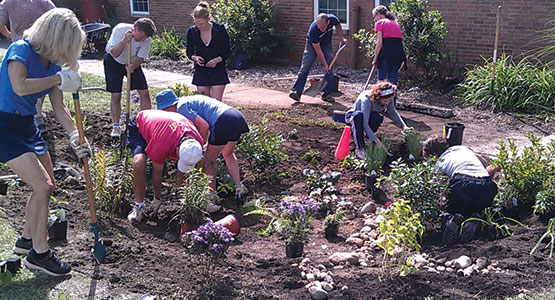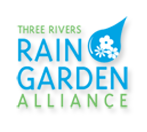Form and function: Planting your rain garden.
As you move from the planning stage to getting your hands dirty, an important thing to keep in mind is that a rain garden is...well...a garden. And like any garden, the focus should be on your featured flowers, along with the assorted other plants you add for accent.
And as with any garden, there's no one best way to plant a rain garden. If you've ever done any gardening, it'll be a snap. It just requires a basic vision, a little site preparation, and putting the right plants in the right places.

Here are a few planting tips that could come in handy.
Although a rain garden can be installed anytime the ground is not frozen, spring and fall are the best times to start your garden. In spring, the soil is easier to dig and the rainy weather means less initial watering. Perennials often do best when planted in fall when they have sent all of their energy to their roots for winter.
Choose plants native to Western Pennsylvania. Plants on our recommended list stand up to brief intervals of standing water, tolerate drought, and have deep roots that let water easily seep into the soil. Plus, they help to conserve soil and water, they don't require fertilizers or other chemicals, and they last longer. Most importantly, they provide appropriate habitats for beneficial insects and animals.
You can stretch out the flowering season by using plants that bloom at different times. And mixing plant heights, shapes, and textures gives the garden depth and interest.
Consider adding sedges, rushes, and grasses to create root competition, as well as to encourage plants to follow their normal growth patterns and not outgrow other species. This diversity not only adds beauty but also creates a thick root system that keeps the entire garden in balance.
And think about adding interest to the rain garden with stone, fencing, garden benches, or any other accessories that complement the garden and add to the appeal of your property.
